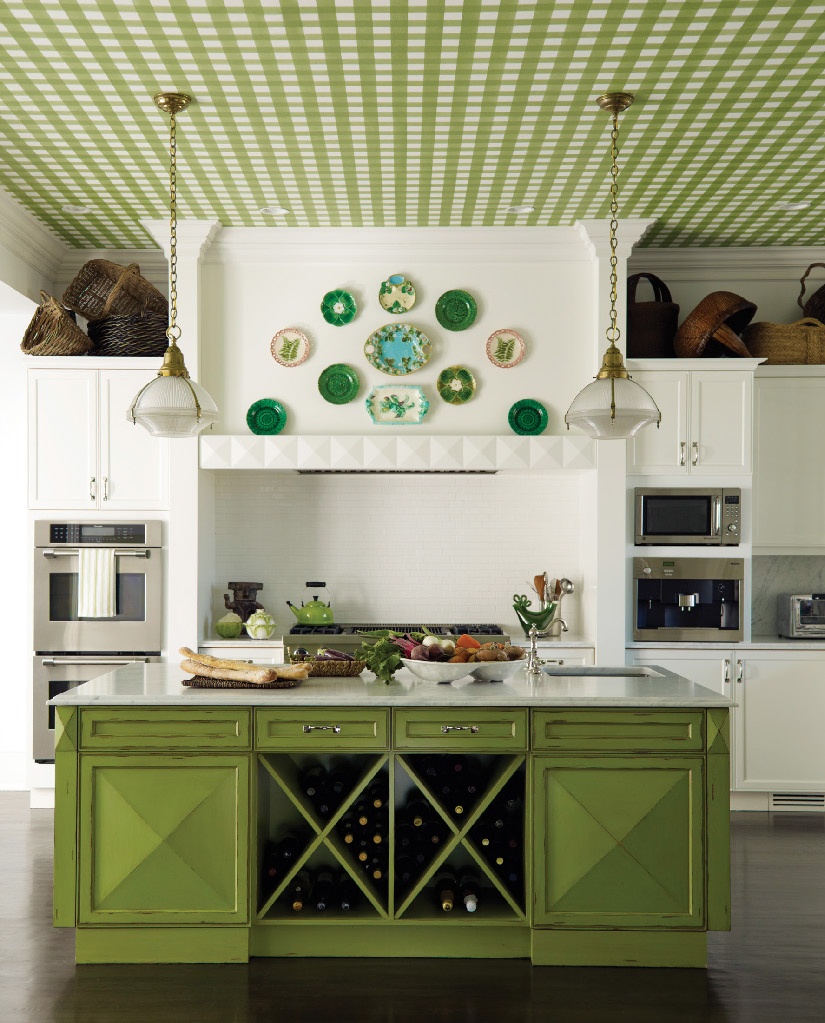Columbia College | Columbia University in the City of New York
Designer Gideon Mendelson ’96 Sweats the Small Stuff
Turning a room into a work of art takes thousands of decisions, some of them premised on cost and other constraints. For interior designer Gideon Mendelson ’96, that’s the best part.
“It has to be beautiful, functional and safe,” he says. “But when we finish a project it’s the problem-solving that’s most satisfying.”

On a recent afternoon, Mendelson and his design team gathered in the conference room of his Third Avenue office for their weekly check-in. They scrolled down a seemingly endless list of tasks projected on the wall with subject lines like “Fix sofa base,” and “Look for barn door hardware alternatives.”
As an hour ticked away, each item crossed off the list seemed to spawn a new one in its place. “Can you also add ‘Dining Room: Think about scenic wallpapers’?” Mendelson asked. On any given day, the Mendelson Group is juggling 5–10 projects, each with a unique set of specifications, down to the style of wallpaper.
Though Mendelson played tennis competitively from sixth-grade through college, he was eventually called to the creative life. Growing up in Scarsdale, N.Y., his mother, Mimi Mendelson, ran her own design firm. Amid the paint cards and fabric swatches, he remembers the excitement of watching her develop furniture layouts.
A better tennis player than student, Mendelson had no intention of applying to Columbia until tennis coach Bid Goswami sent him a note inviting him to visit. The coach and the campus, with its classical buildings towering over College Walk, left a strong impression. So did the expression on his father’s face. A Jew who fled Kazakhstan with his grandparents at 11, Michael Mendelson was ecstatic at the idea of an Ivy Leaguer son. “He gave me that Russian look, ‘You’re going here,’” Mendelson recalls.

Eric Piasecki
Mendelson majored in architecture, and fondly remembers Robert A.M. Stern ’60’s graduate-level course on American architecture. He regularly snuck his mother into class, and they sat in back happily munching on tuna-sandwich bagels. He was a standout on the varsity tennis team, ranked nationally as a junior and elected co-captain as a senior.
After graduation, his interest in architecture fading, Mendelson joined the two-year training program at William Morris Endeavor, a talent agency. It was there, after his boss asked him to rearrange her office while she was traveling, that he discovered his knack for design. Her delight at his efforts inspired him to enroll at the New York School of Interior Design.
Mendelson had worked for West Village-based designer Steven Gambrel for a year when the opportunity arose to design a house for friends of his parents. In 2003, he launched the Mendelson Group and asked his mother to come out of retirement to be his partner. “Of course I said yes!” she says. “What fun!”
The firm has grown and evolved, but the basic design process has stayed the same. Mendelson starts each project by learning his clients’ living habits and tastes, down to their favorite music and colors. His team catalogs each item in the house before any work begins.

kim martineau jrn’97
“We’re creating environments for efficient living,” he said. “We are accounting for every shoe and thigh-high patent leather boot. And providing room for the shoe collection to grow.”
If he has one secret weapon, he says, it’s layered lighting — chandeliers, pendants, flush mounts, sconces, standing lamps, table lamps and picture lights. “And, everything has to be on dimmers!” he adds.
Clients find him through referral, news stories (his work has appeared in The Wall Street Journal and House Beautiful, among other publications) and visits to “show houses” in Manhattan and the Hamptons that designers have extravagantly outfitted for public view.
Mendelson and his husband, Tom, also throw an annual paella party at their weekend place on Long Island’s East End to bring in new business. A shingle-style house designed before they had kids, it features Mendelson’s mix of vintage furniture and modern design, offset by what he calls a “very beachy palette.” He hopes to remodel their 1929 co-op in Park Slope when their kids — Owen (5), and twins Isabella and Leo (3) — are older.
Design, like many other creative professions, has been democratized in the last decade as Pinterest, Etsy and other online forums have made it easier for anyone to design a house fit for Architectural Digest. Mendelson says he has stayed relevant by focusing on the details. “It’s my job to listen, put the pieces of the puzzle together and tell my clients’ stories through my designs,” he says.
This personal touch has endeared him to clients. Brad Gross BUS’90 and his wife hired Mendelson to give their Upper West Side prewar apartment a modern but comfortable feel. In a series of shopping trips, they settled on just the right combination of colors, textures and patterns. The project was finished years ago but they remain close friends. “He makes you feel like you’re his most important client,” Gross says.
Kim Martineau JRN’97 leads communications at Columbia’s Data Science Institute.
Issue Contents
Published three times a year by Columbia College for alumni, students, faculty, parents and friends.
Columbia Alumni Center
622 W. 113th St., MC 4530, 6th Fl.
New York, NY 10025
212-851-7852
cct@columbia.edu
Columbia Alumni Center
622 W. 113th St., MC 4530, 4th Fl.
New York, NY 10025
212-851-7488
ccalumni@columbia.edu

